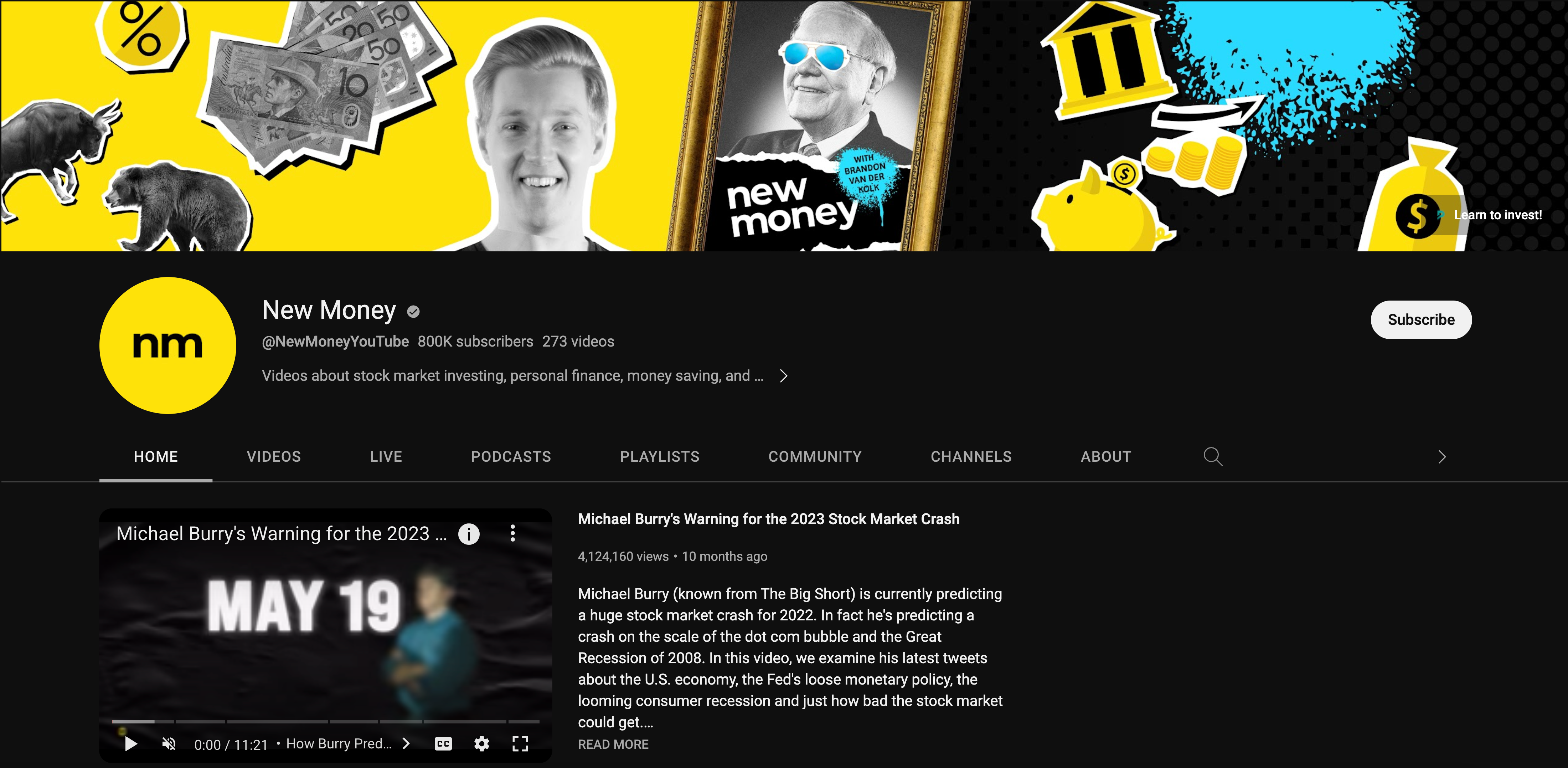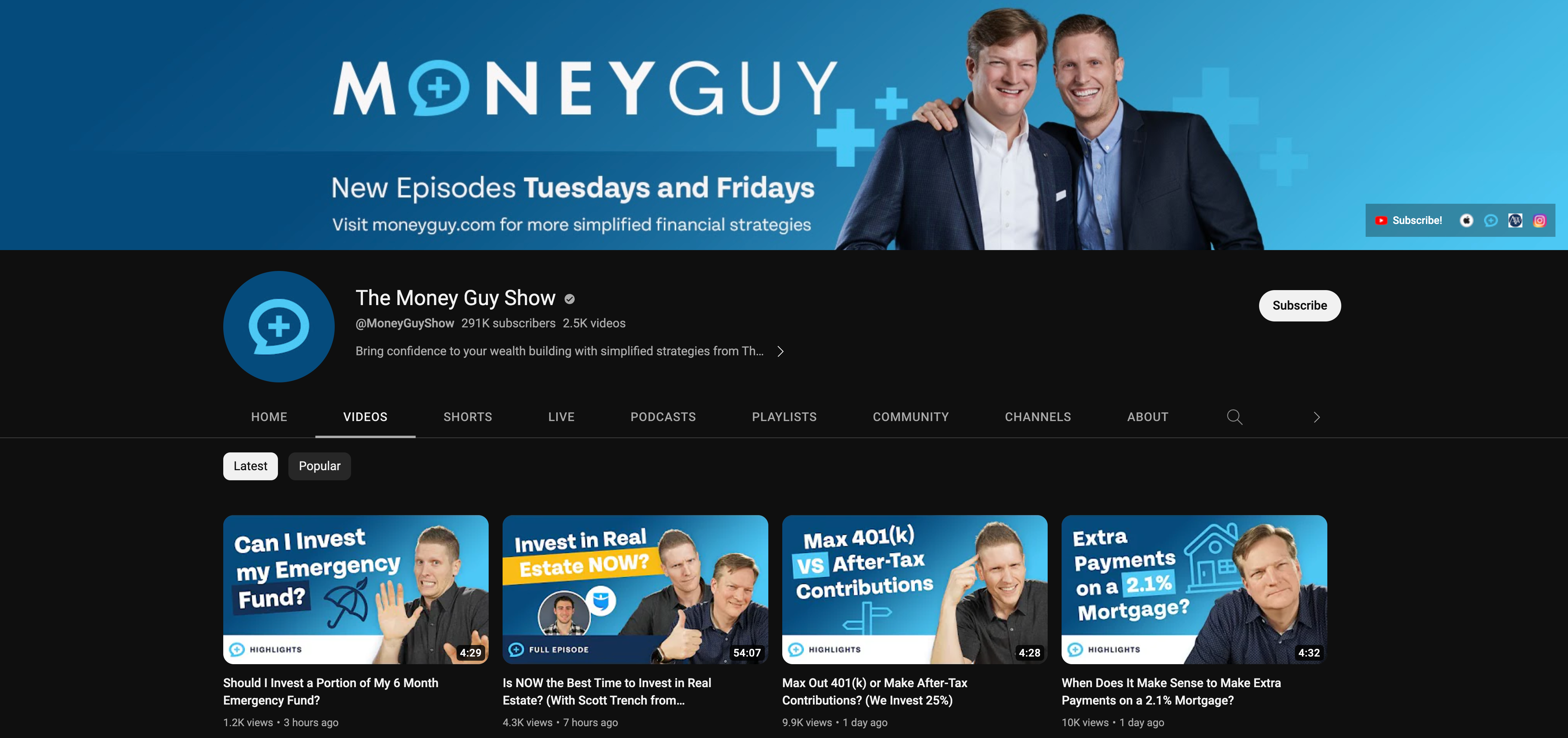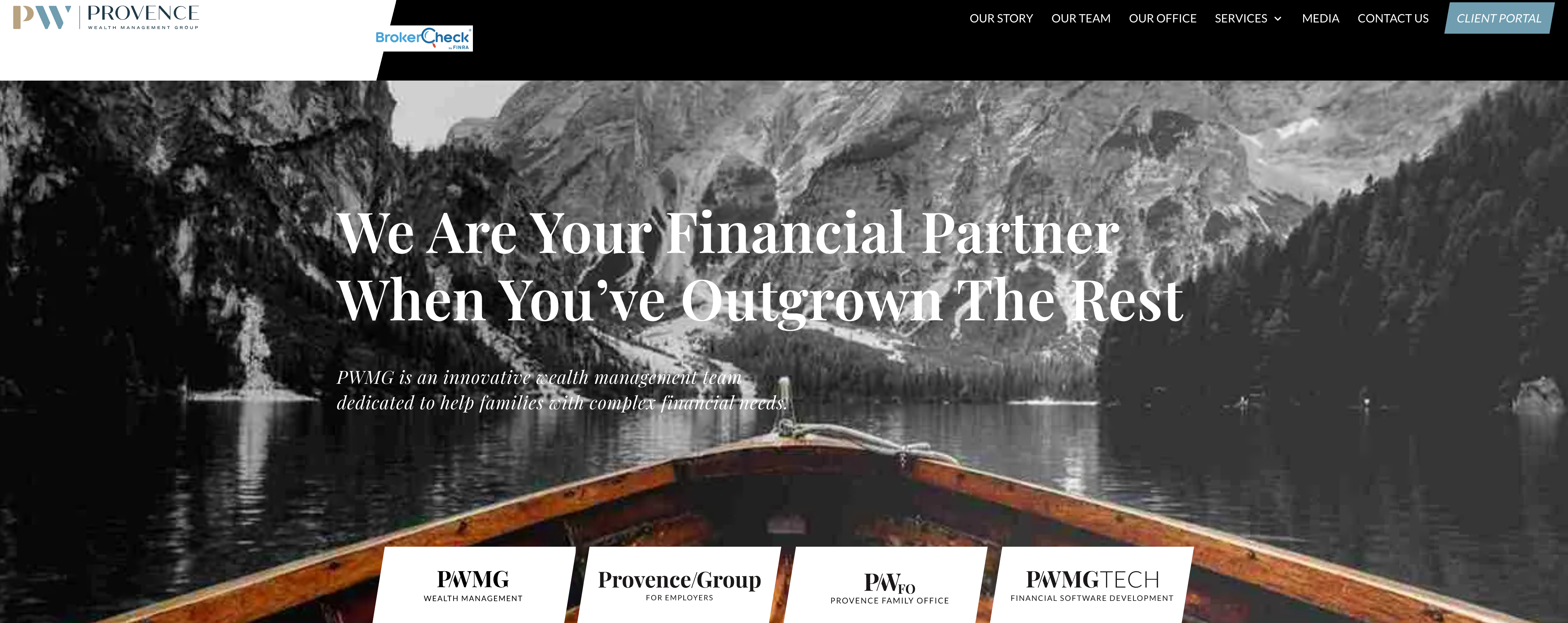While seasoned financial advisors that have been in the industry for ten or more years can make triple the median US household income, those who are starting their business rarely survive their first year of financial consulting because of high client acquisition costs. Building a client base is essential in the financial planning and wealth management industry. As you win over clients, you also win over their trust and have an opportunity to build long-term business relationships that form a client base that will bring you stable income for years. The practical tips described in this article will come in handy if you’re wondering how to build a client base from scratch as a financial advisor or business, so keep reading!
#1 Build your ideal client portrait
With the rise of AI-powered robo-advisors and affordable financial education, it’s critical for financial advisors and firms to choose clients who are able to recognize their expertise and the unique value they offer. This means your ideal audience should clearly understand how your services can benefit them. You can concentrate on clients that fit this general profile in your niche, using the ideal client portrait you have built to improve targeting. This will help you ensure that the effort and money you spent on versatile marketing activities aren’t wasted.
To create your ideal client persona, simply follow these three steps.
Step 1. Collect client data
Gather all the data that characterizes your current clients to determine who is receiving the most benefit from your services. This approach will help you understand what features your clients look for when they make a decision to use your services. You can also use this information to find out more about your ideal client’s pain points and desires.
You can get this type of data from:
- your CRM system
- in-depth interviews
- client surveys
Check out this list of questions you can use in surveys and interviews to build an ideal client portrait.
The questions you have to answer to build an ideal client portrait have to be aimed both at collecting demographic data as well as at learning about your clients’ psychographics.
Step 2. Summarize collected data
Now that you have collected the necessary data, you can identify your ideal client for your financial consulting business by summarizing the information and coming to data-driven conclusions and insights.
For this, you can use an affinity diagram to organize your data and see clear patterns within it.

In an affinity diagram, you first group the insights collected from respondents using common characteristics. Then, summarize the insights and connect them with one top-level group that describes a problem (or one group of questions).
To create such a diagram, you can use stickers or such tools as FigJam, Notion, or Miro board. This approach will let you highlight all insights that are important for your clients and should be used in an ideal client portrait.
Step 3. Create an ICP
After collecting and summarizing all relevant data, it’s time to identify your key customers and list their main demographic and psychographic traits in an ideal client profile. There are multiple templates from Hubspot, Jotforms, and other marketing gurus available on the web that help organize data in a comprehensive way. We recommend that you pick a template that will let you change the blocks and extend them to add more data that is specific to your business.
For example, as a financial planner, you may notice that your clients usually go through life transitions before they contact you (get married or move to another location). Basic ICP templates will miss this specific block, but it might be important in your case.
In any case, you can use an ICP template created by ExpertBox and add more data to it if necessary.
Get a free ICP template and adjust it according to your business needs.
#2 Grow your brand
Having a brand is critical for gaining the trust of others. Branding is focused on showing how you stand out from other advising firms. A solid brand helps you acquire clients — that’s why investing in a brand marketing strategy is essential.
There are numerous methods for constructing and enhancing your brand. We have identified the three most powerful marketing tactics.
Social media marketing
Research conducted by HubSpot has demonstrated that, depending on the sector, social media marketing can be an effective means of increasing brand visibility. Although people rarely reach out for financial consulting services immediately after encountering an advertisement on social media, it is still a viable tool for reinforcing brand recognition.
According to HubSpot, live streams and short-form videos have become the most effective types of social media content in the last year.

Investing in social media marketing can help you reach two key goals: driving quality website traffic and enhancing customer loyalty. As an expert, you possess the knowledge to impress your audience. Leverage this to your advantage and build a strong brand.
Keep in mind that social media channels are the broadest aspect of your funnel and have the highest bounce rate (45%). Thus, it is critical to interact with your audience and gradually guide them from getting acquainted with your brand and offerings to becoming your customers. Just attempting to directly sell to your followers will have little effect.

Rather than just concentrating on closed deals, pay attention to the following metrics:
- Reach
- Audience growth rate
- Engagement rate
Also, it is essential to choose social media channels that are the most effective in your niche. To find out which you should use in your content strategy, monitor your competitors and check what resources your audience uses to get information.
Here are some popular social media content examples dedicated to financial advising and planning:
FREEINVESTING

FREEINVESTING’s channel is dedicated to financial literacy and interviews with tycoons who have built their financial empires and can share knowledge.
New Money

New Money’s channel creates videos on stock market investing, personal finance, money saving, and building wealth.
The Money Guy Show

This channel posts videos on wealth building strategies and provides educational content on wealth management and personal finance literacy.
As you can see, you don’t have to be the Wall Street Journal to achieve success on social media; instead, focus on providing content that is valuable to your audience and resonates with their interests.
Influencer outreach
When it comes to building your brand, a successful content marketing strategy reaches far beyond your website. Though your website content is key in acquiring customers, influencer outreach is even more essential for establishing a personal brand.
The objective of any outreach activity is to engage with authoritative sources and produce quality content for them or with them. However, this differs from pure influencer marketing or traditional content creation because outreach marketing allows you to provide content showing off your expertise to a completely new audience you may never have reached using other mediums.
In the picture below you will see the basic steps of outreach marketing.

In other words, you should reach out to all platforms in your niche that accept content from external sources and offer to submit your work or collaborate. This may involve writing an article or taking part in a podcast.
You may not get immediate leads from this, but outreach will help you build long-term recognition.
Collaborations
When professionals come together to collaborate, they are able to generate more effective solutions. Furthermore, such collaborations are advantageous when building a professional reputation as your joint effort will provide recognition for both of you.
Teaming up with an accountant or attorney can be an effective way to get clients through referrals.
#3 Look for underserved audiences
Most financial advising firms miss the underserved audience groups, targeting the most obvious categories of people, like retirees or those who have recently inherited a property. However, this strategy is often associated with high competition, resulting in more costly marketing. There is a slim chance you will be able to compete with renowned financial consulting firms that have been in the market for a long time, so we advise looking for underserved categories of people instead.
While most advisors work with retirement-aged individuals with lush portfolios, I focus on the underserved young professional space.
#4 Build a community
Community marketing is a highly effective brand development strategy, as it provides an opportunity for clients to come together and discuss topics of interest. This approach has to be tailored to the specific needs of your clients by prioritizing content that brings them value.

Clients can stay engaged with your business through Facebook communities, messenger channels, and exclusive live streams, allowing them to have an opportunity to communicate with you and discuss their experiences and concerns.
#5 Use networking
Developing a referral network is essential for wealth management firms because it provides a direct route for acquiring new prospects and growing a client base. Moreover, referral networks can strengthen the bond between clients and the firm, helping cultivate trust.
You may already be aware of experts that your clients work with and know which of them could be a potential source of new referrals. Additionally, don't forget the value of your current clients and their networks — they have the potential to become a great referral source if they vouch for your services.
Let’s learn how to construct a referral network.
- Choose the referral source. Attending a professional conference is a great way to network with other wealth managers and potential clients. Pick a conference that would attract the audience that might be potentially interested in your services and focus on forming new connections.
- Be helpful. Networking is a valuable tool for gaining what you desire in return for offering something of value. This could be an incentive for recommending your services, a mutual shout-out on social media, or a contribution to your professional community.
- Stay respectful. Those who refer you to their contacts have placed their trust in you, so it is essential to uphold your end of the deal. Otherwise, your network of connections will cease to be effective.
#6 Hold webinars
Hosting a webinar is an excellent way to demonstrate your company’s expertise, generate new prospects, and expand your email list. Moreover, webinars strengthen your brand.
If you are looking to host a successful wealth management webinar, here are some helpful tips to consider.

Hosting a webinar won’t necessarily bring you new clients. However, metrics such as attendance rate and subscribers will help you evaluate its success. Just keep in mind that you have to use a webinar as just one part of your marketing funnel. It shouldn’t be the only marketing activity you invest your time and money into.
Learn about holding webinars along with dozens of other powerful marketing methods that can benefit a financial firm.
#7 Launch paid advertising
Never underestimate the power of paid advertising. Digital advertising is an extremely cost-effective means of connecting with potential clients, and it can be tailored to an increasingly precise degree. It can even be customized to those who have already visited your website, providing an uncomplicated way to reconnect with interested users.
For financial advising companies, the most used tools for paid advertising are: Google Ads and Google Display, LinkedIn, and Facebook for Business. Below, we’ll quickly guide you through the basics of using a paid advertising tool like Google Ads.
Overall, there are three general high-level approaches to paid advertising.
Bidding on branded terms
If a smaller brand is not appearing in the top three organic results when its name is searched, we suggest bidding on it.
Bidding on local terms
The potential return on investment from these types of ads can be significant, but the associated costs may not be worth the potential rewards. For instance, a search query such as "financial advisor New York" can incur a click cost of up to eighteen dollars, resulting in an expenditure of thousands of dollars for the requisite traffic to generate a 3-4% conversion rate.
Bidding on topical terms
The web traffic resulting from these ads may not be the best quality. This is largely due to the imprecise nature of searches conducted with topical keywords.
Once you’ve chosen either topical terms or local terms, it’s time to identify the goals of your paid advertising campaign.
In Google Ads, you can choose from such goals as:
- Sales
- Leads
- Website traffic
- Brand recognition
- Brand awareness and reach
- Local visits and promotion
The goal you’ve selected will affect the general ad performance, as the tool will show an ad to people that are most likely to help you achieve the goals you identified.
After that, choose a type of a campaign. We recommend choosing a Search campaign for bidding on local and topical terms and a Display campaign for branding.
After that, you’ll have to set up the keywords that fit your budget, write ad copies following the best practices from Google Ads, and check if you’ve set up website analytics to track traffic from each ad from a campaign.
#8 Generate leads via website
While entrepreneurs might not have to invest in a professional website if they get enough leads via social media, blogging platforms, and paid listings, a financial advising firm has to establish its presence on the web to increase trustworthiness and set up a long-term lead source that will increase its effectiveness with time.
To build a high converting website that will generate leads and accurately represent your services on the web, you have to use a holistic approach that combines an expert blog with your firm’s portfolio and services.
Financial advising company website design examples
Here are several examples of wealth management company websites you can check out for inspiration.
Provence Wealth Management Group

This website is used to represent services and generate leads, showcasing all the services within a neat menu. It also has clean typography and is built with accessibility in mind.
Creative Planning

This website also meets accessibility standards by showcasing the most important call to actions in a hero section and providing additional information within a menu. Its design is well-balanced, as it showcases all the important content yet feels lightweight because of the negative space.
RLS Wealth

This website has a minimalistic design that showcases the content blocks within a menu yet is able to impress with its bold typography and structure.
You don’t have to hire a developer to launch your website. Most of the website templates available have all the necessary content blocks already in place, are easy to adjust, and require no or minimum coding skills. All you’ll have to do is choose a template that has all the blocks you need to showcase your content.
Requirements financial advising company websites should meet
An attractive design makes a good first impression on your potential clients, but there are other factors that can impact your visitors’ experience. Let’s overview them.
Consistent branding
Use branding elements, such as logo design and color palettes, to make your website recognizable. Make sure to choose something eye-catching.
Loading speed
Normally, it shouldn’t take more than 2 seconds for the page to load completely. The more you make your visitors wait, the higher the chance they will leave.
Mobile-first experience
According to Statista, in the first quarter of 2021, mobile devices accounted for approximately 55% of all internet traffic. This means that you have to ensure your website not only looks good on mobile devices but also offers the same features, the buttons are easy to click, and the fonts remain readable.
Regular updates
Updating existing content keeps your website up to date and helps it increase traffic. Explore latent semantic indexing to learn how you can update content to get more visitors.
Valid SSL certificate
It is imperative that your financial advising website is HTTPS-enabled (check the padlock symbol in the URL bar). Websites that don’t use HTTPS are blocked by browsers and become inaccessible to regular users.
Complete contact information
It is essential for every business website to display their NAP (name, address, and phone Number) information in plain sight. To ensure customers can easily contact you, provide a straightforward contact form along with your contact details.
A booking feature
Even though many templates don’t come with built-in booking features, we still recommend that you offer online booking to reduce back-and-forth communication. Today, there are many ways to integrate a booking experience in a website, be it a landing or a more complex portal.
For example, ExpertBox provides a customizable booking page that offers all the functionality you need to get online bookings.
Learn how to set up ExpertBox booking calendar and start using it to convert clients on the web!
#9 Avoid cold strategies
Getting new clients is essential for new financial advisors, though it’s often a costly process. Naturally, it costs even more when you use slow client acquisition methods. Thus, we don’t recommended:
- cold calling
- cold outreach
Although sometimes these marketing strategies bring results, they are often less effective than the marketing methods described in this article.
Wrapping up
Building a client base as a financial advisor or business involves a lot of hard work, but it can pay off in the long run. By taking the time to understand your ideal client, grow your personal brand, and build a community, you can begin to generate leads and create a successful business. Networking, webinars, paid ads, and website lead generation can help you increase your reach and find more prospects. With the right approach and dedication, you can build a financial advising business that will last. Subscribe to ExpertBox newsletter to get more tips on workflow automation and marketing for the financial advising niche.
FAQ
-
The following practical tips will come in handy if you’re wondering how to build a client base from scratch as a financial advisor or business:
- Build your ideal client portrait
- Grow your brand
- Look for underserved audiences
- Build a community
- Use networking
- Hold webinars
- Launch paid advertising
- Generate leads via website
- Avoid cold strategies
-
The main branding strategies that usually prove to be successful in financial advising are:
- social media marketing
- influencer outreach
- collaborations
-
The requirements a financial advising company website should meet include:
- consistent branding
- fast loading speed
- mobile-first experience
- regular content updates
- valid SSL certificate
- complete contact information
- a booking feature




